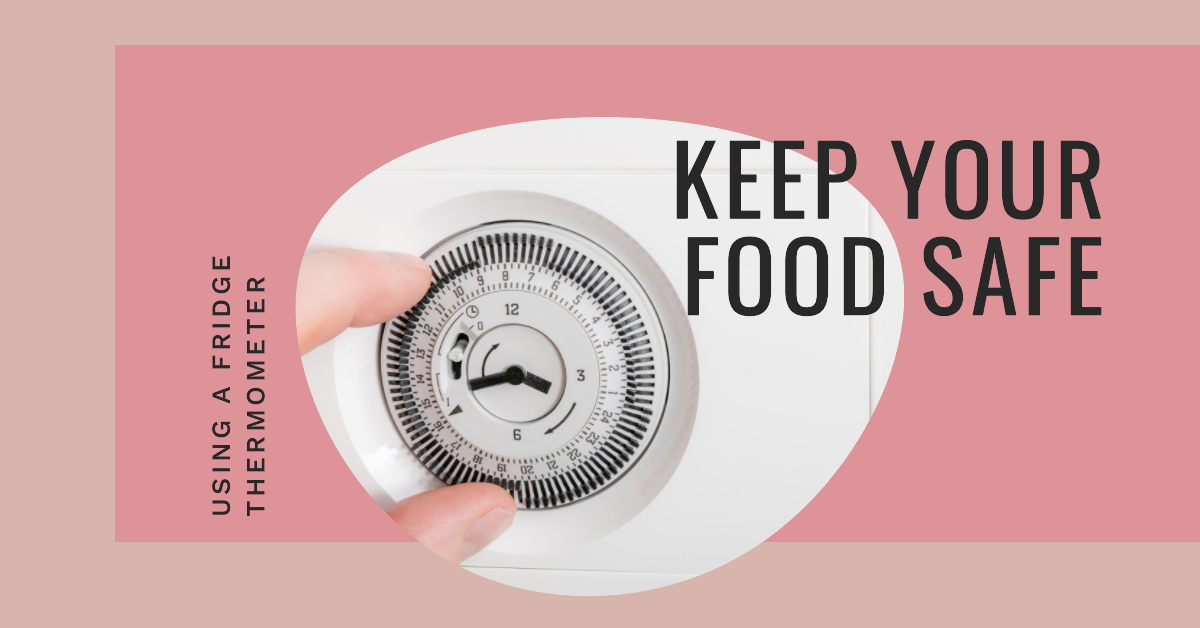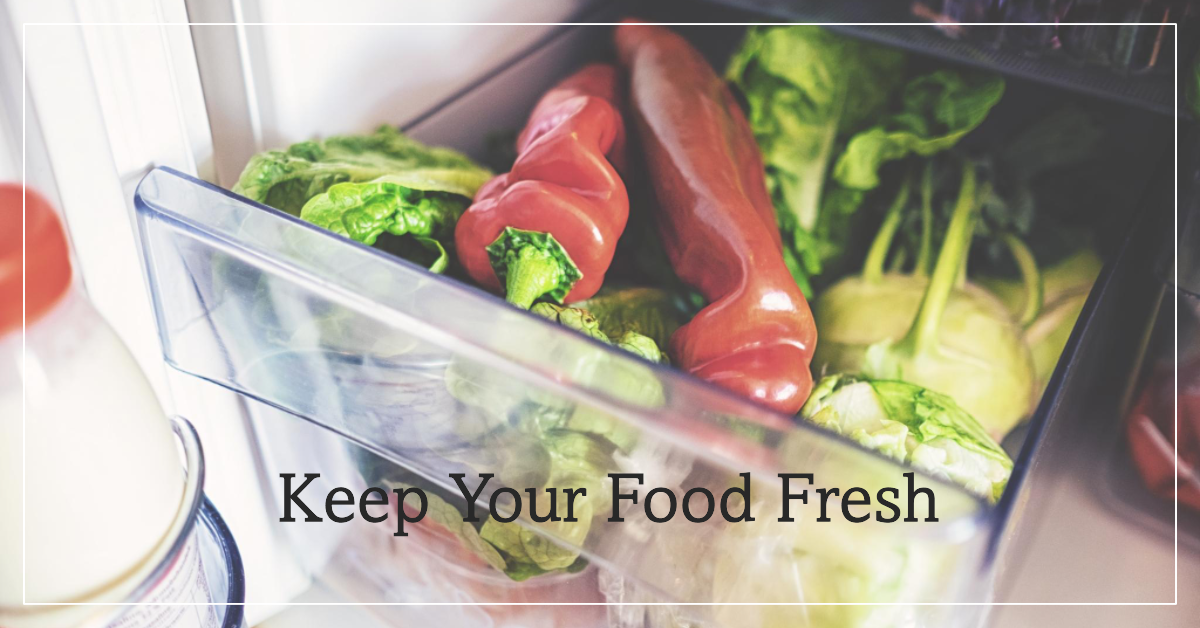Keeping your fridge at the optimal temperature is a crucial part of food safety and maintaining the quality of your groceries. Not only will properly chilled food last longer, but it will also retain its taste, texture, and vital nutrients. This guide equips you with the knowledge to set your fridge temperature for peak performance, ensuring your food stays fresh and safe to consume.
Understanding Fridge Temperature’s Importance
Your fridge acts as a guardian against a silent threat: food-borne illness. These illnesses arise from harmful bacteria that multiply rapidly at room temperature. Maintaining a fridge temperature between 1°C and 5°C (34°F and 41°F) significantly slows this bacterial growth, ensuring your food remains safe to eat.
Think of your fridge as a cool sanctuary for your groceries. However, temperature isn’t just about safety; it also significantly impacts food quality. Proper fridge temperatures help preserve the texture, flavour, and nutrient content of your groceries for longer. For instance, storing vegetables at a slightly crisper temperature keeps them fresh and vibrant, while meats kept cooler maintain their texture and flavour better.
Setting and Maintaining the Ideal Temperature
Most modern fridges boast built-in temperature controls, typically dials or digital displays. While convenient, it’s important to remember that these internal gauges may not always be perfectly accurate. To achieve the optimal temperature for your food and peace of mind, we highly recommend using a separate fridge thermometer specifically designed for fridge use.
Here’s a step-by-step guide on using a fridge thermometer:

- Invest in a Reliable Fridge Thermometer: Look for a digital thermometer with a probe for easy reading and accuracy. Avoid mercury thermometers due to safety concerns.
- Positioning for Accuracy: Place the thermometer in the central part of your fridge, ideally on a shelf rather than the door compartment. Door compartments are generally warmer due to frequent opening and closing.
- Avoiding Fluctuations: Keep the thermometer away from cold air vents or walls, as these areas may not reflect the overall fridge temperature.
Now that you’re equipped with the right tool, let’s explore some additional tips to optimise your fridge’s performance and maintain a consistent cool temperature for your food.
Keeping Your Fridge at Peak Performance

Once you’ve got your ideal temperature established and your trusty fridge thermometer in place, here are some additional practices to optimise your fridge storage and maintain a consistently cool environment for your food:
Fridge Organisation and Temperature Zones:
Not all areas of your fridge are created equal. Colder air naturally settles on lower shelves, while door compartments tend to be warmer due to frequent opening and closing. Here’s a breakdown for optimal storage based on temperature zones:
- Lower Shelves: This is prime real estate for raw meat and fish. The coldest temperatures on these shelves help slow bacterial growth most effectively. Always store raw meat on a covered platter or in a sealed container to prevent leaks or drips contaminating other foods.
- Higher Shelves: Cooked foods and leftovers can reside on higher shelves where the temperature is slightly warmer but still cool enough for safe storage.
- Crisper Drawers: Fruits and vegetables are best suited for the crisper drawers, which often have adjustable humidity settings. We’ll explore optimising humidity control in a dedicated section later.
Minimizing Temperature Fluctuations:
Every time you open the fridge door, warm air rushes in, raising the internal temperature. Here are some strategies to minimise these fluctuations:
- Plan Your Meals: Think ahead and plan your meals before opening the fridge. This reduces unnecessary browsing and keeps the cold air inside for longer.
- Keep it Stocked: A well-stocked fridge helps maintain a more consistent cool temperature. A fuller fridge retains cool air more effectively than an empty one.
- Limit Opening Time: Resist the urge to graze! The less you open the fridge door, the better you can maintain a stable cool temperature.
Regular Fridge Maintenance:
Regular defrosting (if applicable) and cleaning are essential for optimal fridge performance. Here’s why:
- Improved Efficiency: A clean and well-maintained fridge runs more efficiently, using less energy and helping it maintain a consistent temperature.
- Reduced Odour and Bacteria: Regular cleaning removes food spills and odours, preventing the growth of bacteria.
The next section will provide a helpful guide for troubleshooting common fridge temperature issues.
Fridge Temperature Troubleshooting Guide
Even with the best intentions, there might be times when your fridge isn’t maintaining the proper temperature. Here’s a guide to help you identify and address potential issues:
- Is your food freezing? This could indicate a temperature set too low. Adjust the thermostat slightly upwards and monitor the fridge thermometer over the next 24 hours. Remember, it can take a full day for the fridge to adjust to a new temperature setting.
- Is your food spoiling quickly? This might be a sign of the fridge not being cold enough. Check the thermostat setting and ensure it’s within the recommended range of 1°C to 5°C (34°F to 41°F). If the setting seems correct, there could be an underlying issue.
- Is the door seal damaged? A faulty seal allows warm air to enter the fridge, affecting the internal temperature. Inspect the door seal for any cracks, tears, or brittleness. Worn seals can often be replaced at minimal cost.
If you’ve checked these points and your fridge still isn’t maintaining the correct temperature, here are some next steps:
- Double-check Fridge Placement: Ensure your fridge isn’t positioned too close to heat sources like ovens, radiators, or direct sunlight. This can significantly impact its ability to maintain a cool temperature.
- Consult a Qualified Engineer: For persistent problems, it’s advisable to consult a qualified refrigeration engineer. They can diagnose the issue and recommend repairs or servicing if necessary.
By following these tips and being observant of your fridge’s performance, you can ensure your food stays fresh and safe to consume. In the next section, we’ll delve into the ideal fridge temperatures for various food categories.
Recommended Fridge Temperatures for Different Foods
Keeping various foods at their optimal temperatures within the fridge isn’t just about safety; it also helps them retain their freshness, texture, and flavour for longer. Here’s a handy table to guide you:
| Ideal Fridge Temperature (°C) | Ideal Fridge Temperature (°F) | Food Category | Storage Location | Safe Storage Tips |
|---|---|---|---|---|
| 1 – 4 | 34 – 40 | Raw Meat (beef, poultry, pork) | Lower shelf | Always store raw meat on a covered platter or in a sealed container to prevent leaks or drips contaminating other foods. |
| 0 – 2 | 32 – 35 | Ground Meat (minced beef, sausage) | Lower shelf | Ground meat spoils even faster than whole cuts due to its increased surface area. Prioritise the coldest part of your fridge for these items. |
| 1 – 4 | 34 – 40 | Seafood (fish, shellfish) | Lower shelf | Similar to raw meat, fish and shellfish are susceptible to bacterial growth. Keep them on the lowest shelf to maintain freshness. |
| 4 – 5 | 39 – 41 | Eggs | On a shelf, not in the door compartment | Eggs are particularly sensitive to temperature fluctuations. While some fridges have designated egg trays in the door, these areas are generally warmer and more prone to variations. Choose a stable shelf location inside the fridge. |
| 1 – 4 | 34 – 40 | Dairy Products (milk, cheese) | On a shelf, not in the door compartment | Milk and cheese also benefit from consistent cool temperatures. The door compartment is constantly exposed to temperature changes when the fridge is opened, so opt for a shelf location instead. |
Optimum Temperature for Fruits and Vegetables:
Fruits and vegetables have varying temperature requirements. To ensure they stay fresh and crisp for as long as possible, we’ll explore crisper drawer humidity control in the next section. However, here’s a general guide for fridge storage:
- Fruits (berries, grapes): 3 – 5°C (37 – 41°F)
- Leafy Greens (spinach, lettuce): 4 – 5°C (39 – 41°F)
- Root Vegetables (carrots, potatoes): 4 – 7°C (39 – 45°F)
We’ll provide more specific storage recommendations within the crisper drawer section. By following these guidelines and utilising proper storage techniques, you can extend the shelf life of your groceries and minimise food waste.
Crisper Drawers and Humidity Control: Keeping Produce Fresh and Crisp
Fridge crisper drawers are a fantastic feature for extending the shelf life of your fruits and vegetables. These drawers provide a cooler environment than the main fridge compartment but with varying levels of humidity to cater to the specific needs of different produce types. Here’s how to optimise your crisper drawers for peak performance:
The Importance of Humidity Control:
Fruits and vegetables have varying water content. Leafy greens like spinach thrive in a moist environment, while some fruits like berries benefit from slightly drier conditions. Improper humidity levels can lead to spoilage, with vegetables wilting and fruits drying out or developing mould.
Understanding Crisper Drawer Settings:
Most crisper drawers have a slide or dial mechanism that allows you to adjust humidity levels. Generally, a high setting (closed vent) creates a more humid environment, suitable for leafy greens. Conversely, a low setting (open vent) allows for better air circulation and is ideal for fruits with lower moisture needs.
Ideal Crisper Drawer Humidity Levels:
To ensure your fruits and vegetables stay fresh for as long as possible, consult this handy guide:
| Produce Type | Ideal Humidity Setting |
|---|---|
| Leafy Greens (spinach, lettuce) | High Humidity (Closed Vent) |
| Herbs (basil, parsley) | High Humidity (Closed Vent) |
| Broccoli, Celery, Asparagus | High Humidity (Closed Vent) |
| Berries (strawberries, blueberries) | Low Humidity (Open Vent) |
| Grapes | Low Humidity (Open Vent) |
| Stone Fruits (peaches, plums) | Low Humidity (Open Vent) |
| Melons (watermelon, cantaloupe) | Low Humidity (Open Vent) |
Maximising Crispness:
- Sort Through Produce Regularly: Remove any spoiled items from your crisper drawers to prevent them from contaminating fresh produce.
- Wrap Certain Vegetables: Vegetables like asparagus or cucumbers can benefit from being loosely wrapped in a damp paper towel before storing them in the crisper drawer. This helps retain moisture and prevent wilting.
- Store Similar Produce Together: Grouping fruits and vegetables with similar ethylene gas emissions can help them ripen at a more even pace. For example, store apples separately from bananas or melons.
By following these tips and utilising the adjustable humidity settings on your crisper drawers, you can create an optimal environment for your fruits and vegetables, keeping them fresher and crispier for longer. This not only reduces food waste but also allows you to enjoy the vibrant flavours and textures of your produce for an extended period.
Safe Fridge Storage Times & the Danger Zone
Knowing how long to store food safely in your fridge is essential to prevent spoilage and potential foodborne illness. This section equips you with a helpful table outlining recommended fridge storage times for various food categories, and explores the concept of the “danger zone” for optimal food safety.
Safe Fridge Storage Times:
Here’s a quick reference guide to help you determine how long to store different foods in your fridge:
| Food Category | Recommended Fridge Storage Time |
|---|---|
| Raw Meat (beef, poultry, pork) | 1-3 days (ground meat: 1-2 days) |
| Seafood (fish, shellfish) | 1-2 days |
| Cooked Leftovers | 3-4 days |
| Eggs | 3-5 weeks |
| Dairy Products (milk) | 5-7 days |
| Hard Cheeses | Up to 4 weeks |
| Leafy Greens | 5-7 days |
| Fruits (berries, grapes) | 3-5 days |
| Root Vegetables (carrots, potatoes) | 5-7 days |
Remember: These are general guidelines. Always check “use by” or “best before” dates on food packaging for specific recommendations. Spoilage can occur faster depending on factors like initial freshness and storage conditions. When in doubt, discard the food.
Understanding the Danger Zone:
The “danger zone” refers to the temperature range between 40°F (4°C) and 140°F (60°C) where bacteria multiply rapidly. This is why maintaining a fridge temperature between 1°C and 5°C (34°F and 41°F) is crucial. Food left in the danger zone for extended periods can become unsafe for consumption.
Tips for Minimizing Food Exposure to the Danger Zone:
- Thaw frozen food safely in the fridge or using the defrost setting on your microwave.
- Don’t leave perishable food out at room temperature for extended periods. Ideally, refrigerate leftovers within two hours of cooking.
- Minimize fridge door opening times. The more you open the door, the warmer the internal temperature becomes.
- Reheat leftovers to an internal temperature of 75°C (167°F) to ensure proper food safety.
By following these tips and maintaining proper fridge temperature, you can significantly reduce the risk of foodborne illness and ensure your groceries stay safe and delicious for longer.
Conclusion
Maintaining the proper fridge temperature is a cornerstone of food safety and preserving the quality of your groceries. By following the guidelines outlined in this guide, you can ensure your fridge operates at its optimal level, keeping your food safe to consume and maximising its shelf life.
Here’s a quick recap of the key takeaways:
- The ideal fridge temperature range is between 1°C and 5°C (34°F and 41°F).
- Invest in a separate fridge thermometer for the most accurate temperature readings.
- Organise your fridge strategically, utilising different temperature zones for various food categories.
- Minimise fridge door openings and maintain a well-stocked fridge for consistent cool temperatures.
- Regularly clean and defrost your fridge (if applicable) for optimal performance.
- Store different foods at their recommended fridge temperatures to ensure safety and optimal quality.
- Utilise crisper drawers with adjustable humidity settings to keep fruits and vegetables fresh and crisp for longer.
By making these practices a habit, you can not only prevent food-borne illnesses but also enjoy fresher, tastier food for a longer period. Remember, a well-maintained fridge is an investment in your health and well-being, allowing you to make the most of your groceries.
Frequently Asked Questions
Q: My fridge has a smart temperature control feature. How does it work?
A: Smart fridges often use Wi-Fi connectivity to allow you to monitor and adjust fridge temperature remotely via a smartphone app. Some models might also offer automatic adjustments based on usage patterns or sensor data.
Q: My fridge is making a lot of noise. Is this normal?
A: While some fridge noise is normal due to operation (e.g., fan running), excessive noise could indicate an issue. Check for loose parts or ensure proper ventilation around the fridge. If the noise persists, consult a qualified appliance repair engineer.
Q: My fridge isn’t cooling evenly. What could be the problem?
A: Uneven cooling could be caused by blocked air vents, a faulty door seal, or overloaded shelves restricting airflow. Ensure proper air circulation by clearing vents and avoiding overcrowding the fridge. A damaged door seal allows warm air to enter, so inspect the seal for tears or cracks. If these basic checks don’t resolve the issue, consult a professional.
Q: Can I store leftovers in the same container I cooked them in?
A: It’s generally not recommended for long-term storage. Leftovers can trap heat and moisture in the original container, promoting bacterial growth. Let leftovers cool completely, then transfer them to an airtight container for fridge storage.
Q: How often should I clean my fridge?
A: Ideally, clean your fridge every month. This involves wiping down shelves, drawers, and door compartments with a mild detergent solution. For deeper cleaning, remove drawers and shelves for a more thorough scrub. Regularly defrosting the fridge (if applicable) is also crucial for optimal performance.
By addressing these common concerns, we hope to empower you with the knowledge to confidently manage your fridge temperature and food storage practices. Remember, a well-maintained fridge with proper temperature control is key to maximizing food safety and minimizing waste.
